Whitney Pattern 1853 Enfield Rifle Muskets
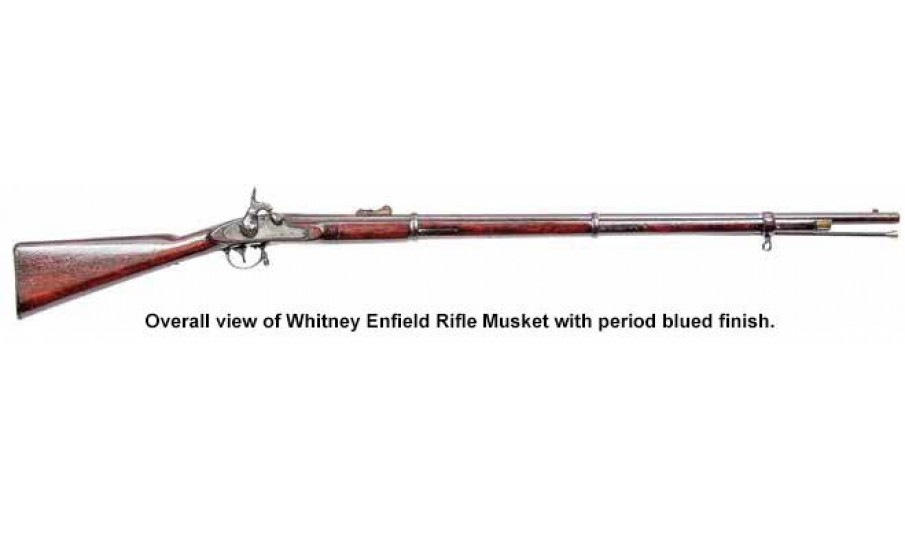
The American-made Pattern 1853 Enfield Rifle Musket contract that was the downfall of the Robbins & Lawrence firearms manufacturing company. As part of the bankruptcy process, many assets of the defunct firm were sold at auction, with one of the largest buyers being Eli Whitney Jr., the principle of the Whitneyville Armory. As previouslt noted, Whitney obtained a large number of gun parts as well as some machinery at this auction.
This month, we will take a look at one pattern of the “Whitney Enfields” he produced using parts that he purchased at the auction. At the conclusion of Whitney’s contract to provide U.S. M1841 “Mississippi Rifles” to the U.S. Ordnance Department, Eli Whitney Jr. opined that he had lost money on the deal. He blamed the strict standards of gauging and the quality control to which the 15,000 rifles were subjected to during government inspections, as the reason the contract was a money losing proposition.
His solution was to recoup losses while utilizing parts and machinery already on hand by manufacturing slightly lower quality guns. These arms would not be subjected to the stringent U.S. government inspection standards; Whitney’s plan was to sell them to state and local militias. While these guns often resembled the standard production military long arms of the era, they all contained Whitney’s unique manufacturing short cuts. These included the use of non-interchangeable parts, and often, the use of condemned, remanufactured, repurposed, and surplus gun parts as well.
While some patterns were very close copies of U.S. military patterns then in production, others were actually Whitney Firearms designs, like the company’s “Enfield” series of rifles and rifle muskets. These guns bore only the most minor resemblance to the British long arms they were supposedly patterned after.
The Whitney Enfields were manufactured using many surplus components from the Robbins & Lawrence Pattern 1853 Type II Enfield Rifle Muskets that Whitney obtained at the liquidation auction. Among the items purchased by Whitney were at least 5,000 sets of solid Enfield pattern barrel bands, several thousand Enfield pattern rifle stocks that “would not pass Government inspection,” as well as many pieces of small work (butt plates, screws, escutcheons, etc.) in both finished and rough states of production. Whitney also acquired at least one rifling machine at the auction. It appears that he also obtained at least some stocks and barrels that were in the unfinished rough state, in addition to some condemned barrels. This interesting assortment of parts would become the basis for Whitney’s “Enfield” series of long arms, which included at least four major variations of a 33-inch barreled “short” rifle and a 40-inch barreled rifle musket.
Like most Whitney arms not produced for a U.S. government contract, there were often small variations in furniture, hardware, and sights, as Whitney utilized parts on hand, changing components when the supplies of one particular part were used up. Between 1860 and 1863, Whitney produced somewhere between 3,300 and 3,500 “Enfield” rifle muskets. Other than having a general appearance similar to the Enfield, the guns were really an amalgamation of the “Enfield” and “Springfield” patterns, using parts that were immediately available to Whitney.
The Whitney Enfield Rifle Muskets had 40-inch long, .58 caliber barrels that generally resembled those of the U.S. M1855 and M1861 muskets, with a round bolster and a clean out screw. Like most Whitney arms, the gun barrels were batch or serial numbered with an alphanumeric mark on top of the barrel, behind the front sight. Most barrels were rifled with the typical Whitney 7-groove rifling, with a slow 1:72" twist, appropriate for elongated ball ammunition. The barrels were usually unmarked, other than the alphanumeric number, and usually carried no proof marks.
The muskets either had a long-base Whitney designed rear sight that resembled the P1853 Enfield, the early U.S. M1855 Rifle Muskets, or a Whitney designed “Mid-Range” rear sight. This latter sight had a single L-shaped leaf with aperture and was mounted in a base similar to the U.S. M1858 and later M1861 rear sights. The leaf was more like the later M1864 rear sight, with a small aperture for the 300-yard setting, rather than a middle leaf. It is quite possible that this Whitney sight was the model upon which the later U.S. M1864 rear sight was based.
The front sight doubled as a lug for an angular (socket) bayonet of the U.S. pattern. The outer diameter of the barrel was designed to accept either the U.S. M1855 or British P1853 pattern socket bayonets. The locks were a uniquely Whitney in design. They were flat and were flush mounted in the mortise with a rounded rear, and an odd projection between the bolster and the hammer. The hammers were similar to U.S. M1855 and M1861 hammers in profile, but again, distinctly Whitney. The lock was secured by two bolts that passed through brass lock escutcheons with rounded ears, similar to the British Enfield design, but again, slightly different. The lock plates were usually marked in a single line, forward of the hammer: E. WHITNEY. The trigger guard was more similar to U.S. than British designs, in that it was made of two pieces, with the guard bow attached to a separate trigger plate. However, the bow was made of brass and the plate was iron. The brass guard bows were likely overruns from the U.S. M1841 Mississippi rifle contract, as they match that exact pattern.
The stock had either a Whitney style, “white metal” forend cap or a British style brass Enfield cap, apparently based upon availability. A pair of sling swivels was provided, one on the face of the trigger guard bow and one on the upper barrel band. The two types of ramrods provided with the guns were distinctly Whitney designs. Both had straight steel shanks and brass heads. One style had a cupped, semi-tulip shaped head similar to those on U.S. M1855 and M1861 rifle muskets, and the other had a sort of trumpet style (cone shaped) brass head, likely left over from M1841 rifle production.
The stocks were modified P1853 Enfield stocks from the Robbins & Lawrence auction that were altered to fit the components that Whitney installed in them. While the majority of the guns appear to have been finished bright, at least some were apparently blued. A handful of extant examples retain portions of their original, period blued finish. This finish would have been appropriate if Whitney was actually trying to pass these second class arms off as real British Pattern 1853 Enfield Rifle Muskets.
While the guns were hardly uniform, and followed no specifically established military pattern, Whitney managed to sell some 3,300 of them between 1860 and 1863. His largest customer was the state of Maryland, which ordered 2,000 immediately after the John Brown raid on the Harpers Ferry Arsenal. Various sources note that the guns were delivered in 1861 and used to arm the Maryland Volunteer Militia. According to Flayderman’s Guide to Antique American Arms, some 370 of those guns were captured by southern sympathizers during the April 19, 1861, riots in Baltimore.
In November 1860, the state of Georgia contracted for 1,700 guns, but it is believed that no more than 1,225 were actually delivered. In late 1860, the Clarke County, Miss., militia (known as the Enterprise Guards) purchased 75 Whitney Enfield rifle muskets. The “Enterprise Guards” eventually became the core of Co. B, 14th Miss. Vol. Inf. The U.S. Ordnance Department acquired 100 guns on the open market through Schuyler, Hartley & Graham of New York, purchasing them on Aug. 10, 1861.
After the outbreak of hostilities, it appears that some smaller amounts of the guns were sold through arms agents such as William Read & Son and Fitch & Waldo. It is quite possible that some of these guns ended up in southern hands as well, via straw purchases. Thus, even though the Whitney Enfield Rifle Musket was a second class long arm, made primarily from surplus and repurposed parts, a reasonable number of the guns were acquired by both sides during the early part of the American Civil War. Despite production numbers in excess of 3,000 pieces, these guns are fairly scarce on the collector market today, and high condition examples are very desirable additions to advanced collections of Civil War rifle muskets.
Tim Prince is a full-time dealer in fine & collectible military arms from the Colonial Period through WWII. He operates College Hill Arsenal, a web-based antique arms retail site. A long time collector & researcher, Tim has been a contributing author to two major book projects about Civil War era arms including The English Connection and a new book on southern retailer marked and Confederate used shotguns. Tim is also a featured Arms & Militaria appraiser on the PBS Series Antiques Roadshow.


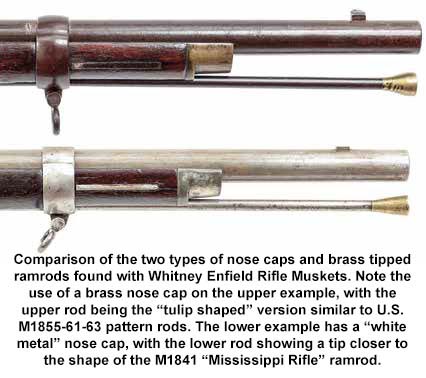
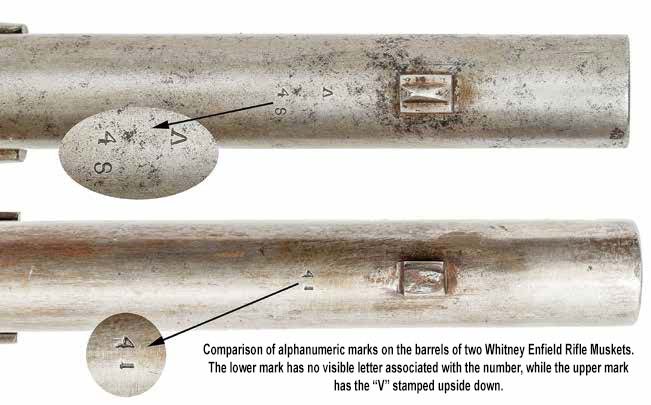
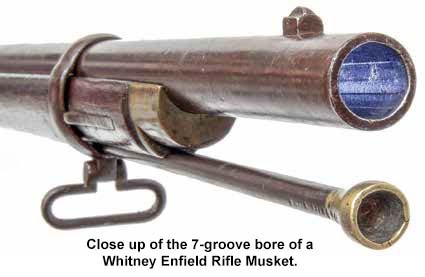
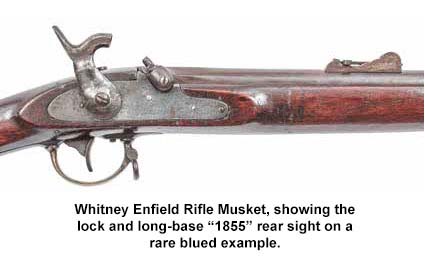
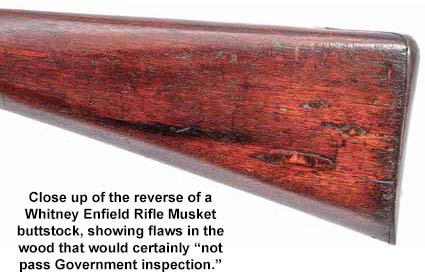

Your Comments
Bob Jersey
10/04/2022
I am happy to have found this blog.
I have owned for years my great grandfather's Whitney Enfield rifled musket. He served in the 19th Illinois Regiment Infantry and I believe that the rifle was issued by the US government because it has US stamped on the top of brass butt plate.
Does any know how many rifles that the US government purchased?
Brian Burkett
05/26/2022
Interesting note: These Robbins&Lawrence band springs that are utilized on the Whitney Pattern P53's also ended up on the Unmarked M1861 muskets dated 1864. While the Federal gauge was showing these band springs exposed area was 2", the unmarked M1861's that used the remainder of the surplus Robbins & Lawrence springs have a 2 5/16"exposed length.
Philip Ennis
06/07/2019
Going through my extensive library I discovered an armament report dated May of 1863 from General L. McLaw's division. its purpose is to list all the arms then in possession of the 19 regiments of said division. The top of the first column reads: Springfield Rifle Cal. .58; the second: Long Enfield Cal. 57; the third: Short Enfield Cal 57 the fourth: Other rifles for cavalry use; the fifth: Miss. Rifles 54; THE SIXTH: ENFIELD MUSKET CAL. 57; the seventh: Springfield Musket Cal.69. All the arms in column SIX all 823 of them were in the hands of GEORGIA men; Cobbs Legion, Phillip's Legion, 16th, 18th and 24th. Certainly these "Enfield muskets", listed distinctly and 4 columns from the conventional Long British imported variety are these! And these in our opinion are the ubiquitous LONG WHITNEY ENFIELD RIFLED MUSKETS. Please note they are listed as Caliber .57 and this means they were not the .75 caliber Enfield/ Tower muskets for it would have been stated.
Philip Ennis
02/09/2019
In almost 60 years of collecting and dealing I have owned a few of there Whitney Enfield rifled muskets. Most, if not all, have had Confederate associations. At least one was raised carved with an inscription stating that it was "Picked up at the Peach Orchard...."; this example last examined at Mr. "Dickie" Ferry's home about 15 years ago . At least 2 Civil War period photos are extant showing Georgia soldiers holding Whitney Enfield rifled muskets (not P1853 Enfields to be sure; the longer distance between the muzzle end and the nose cap is manifest). To my mind these arms "whistle Dixie" the very few staying North not withstanding.
